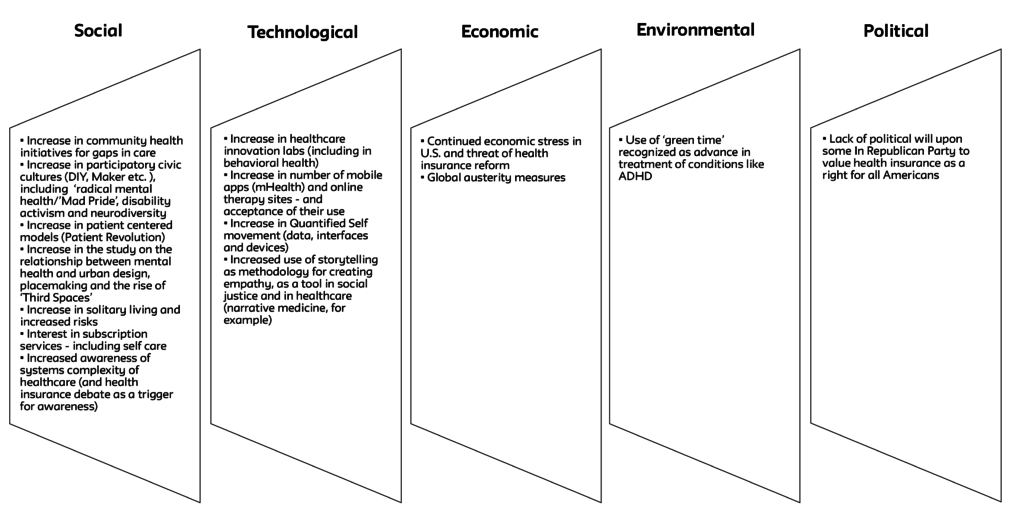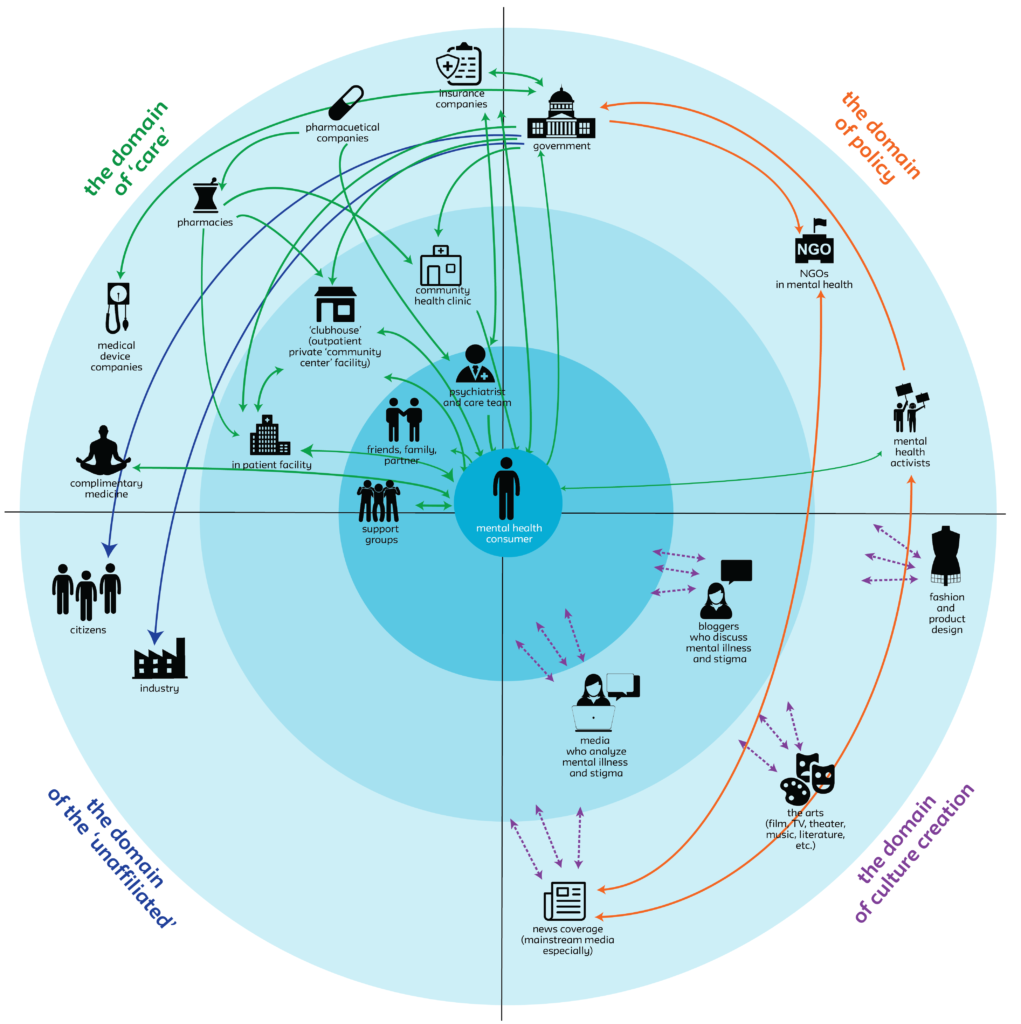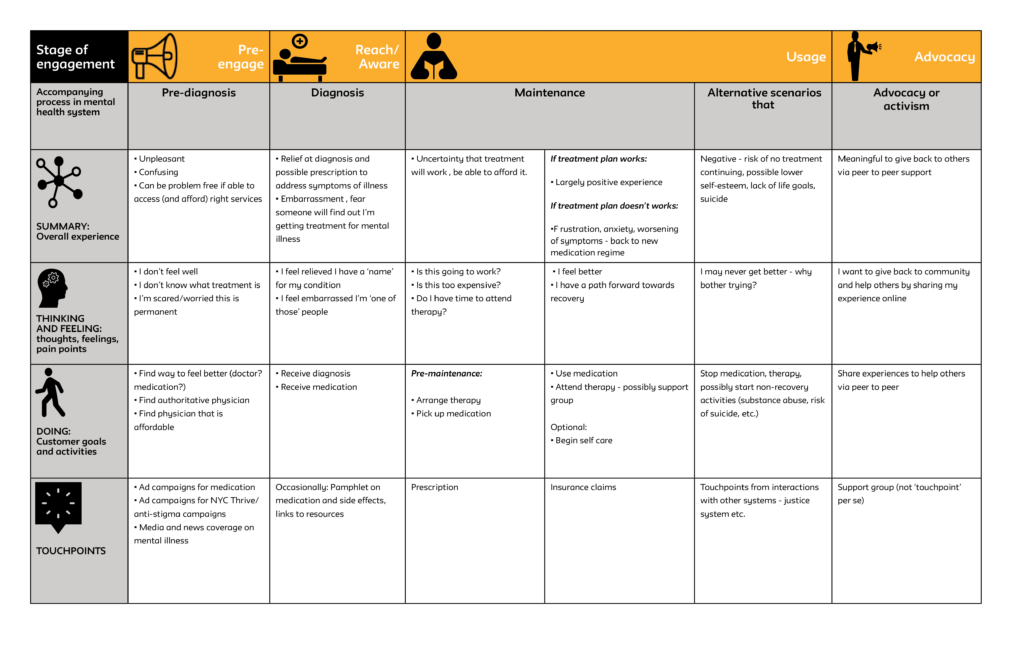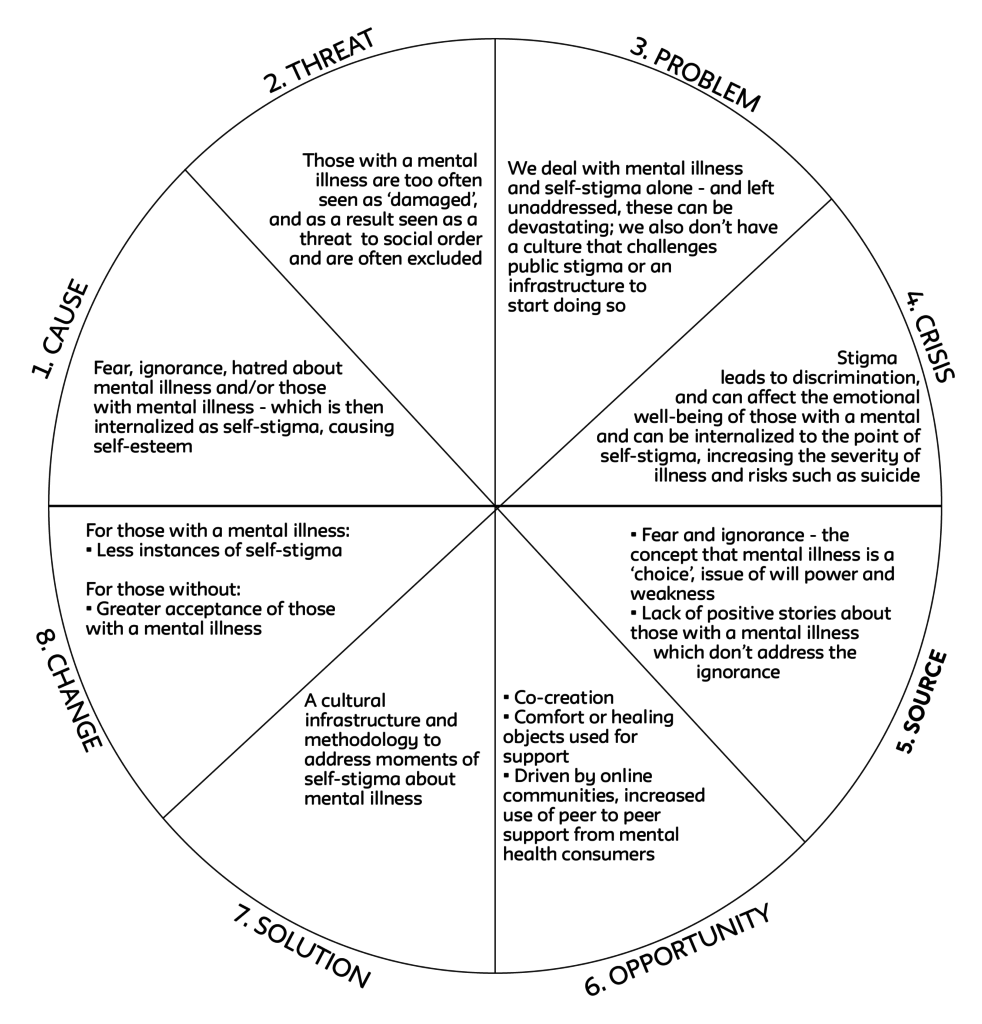Throughout the project I created a series of strategy related diagrams to identify possible points of intervention.
STEEP model
I created a STEEP model to understand the signals – the trends and influences – that can shape the design intervention I was creating. This chart helped me understand how much occurs in the social sphere that could potential shape where my interventions could live. While I knew stigma often lives in the interactions between people, this model allowed me to think of what would be appropriate to explore and what analogous industries outside of healthcare could be used as inspiration. I attempted to do something similar using the work of Arjun Appadurai’s 5-scapes model[1], but ultimately found that didn’t illuminate much for me because it was extremely high level looking at the interactions of large scale systems, which lost the intimacy of personal experiences within it.
[1] Appadurai, Arjun. “Disjuncture and difference in the global cultural economy.” Theory, culture & society 7, no. 2 (1990): 295-310.

Stakeholder ecosystem map
I created a stakeholder map to understand who influences the world of stigma and self-stigma and view dependencies – and lack of dependencies and perhaps accountability – by mapping out stakeholders and their interactions. This is especially key because treatment is delivered by many potential sources. I started down a road of ‘infrastructures’ to understand gaps in care. The complexity of the systems involved isn’t just financing, but the operations of that service, too.
Customer Journey Map of the current state

I created a Customer Journey Map of a current state of someone with a mental illness to identify moments of self- stigma as possible points of intervention and to understand the complexity of systems. I focused on understanding gaps, opportunities and possible prototypes to focus on these areas. This allowed me to also think of aspects of a holistic view of an experience to understand what people are doing, thinking, feeling and touchpoints involved. I then would later create a Customer Journey Map of a ‘future state’ to understand how my proposed intervention would work, and a Business Model Canvas to clarify how to operationalize this intervention from the ‘backend’, looking at partners and other components involved in creating a new product or service.
Wheel of Reason

The final model I created was a Wheel of Reason to understand a holistic view of the problem space and possible ways to think not only about my intervention, but what would change in a system as a result.